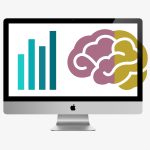THE LATEST TECH WORKFORCE TRENDS. RIGHT HERE.
What’s trending now? We help you keep up. As the top name in tech training, we partner with top business leaders and other experts to stay ahead of what’s next – and help you stay up to speed.
NOT YOUR BASIC BOOTCAMP
At General Assembly, we’re not just another tech bootcamp. We’re the pioneers, the trailblazers, and the innovators of the tech education landscape.

LATEST POSTS

Article
July 6, 2021
Why DEI Begins & Ends With Learning
Article
June 23, 2021
Alumni Success Stories: How One GA Grad Changed Careers After 10 Years in Finance

Article
June 16, 2021
A Beginner’s Guide To Tableau
Article
June 16, 2021
A Beginner’s Guide to Learn Python Programming

Article
June 16, 2021
7 Tips to Learn Tableau Fast

Article
June 16, 2021
